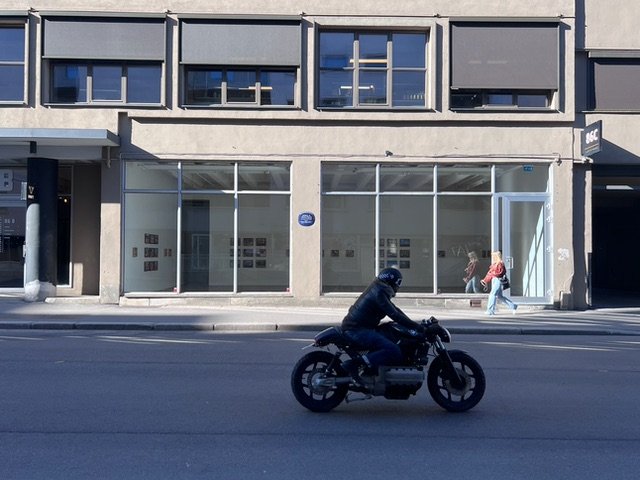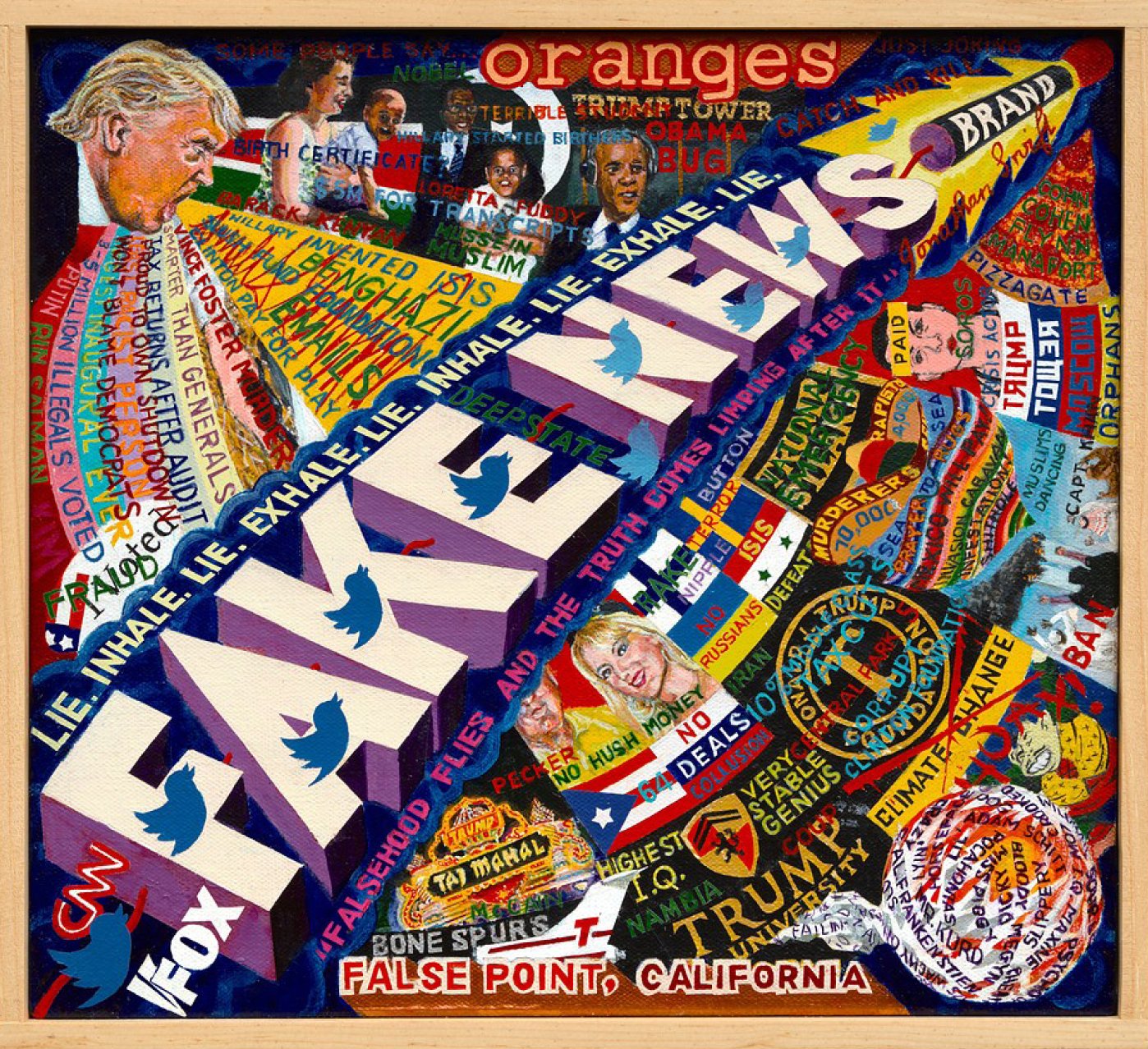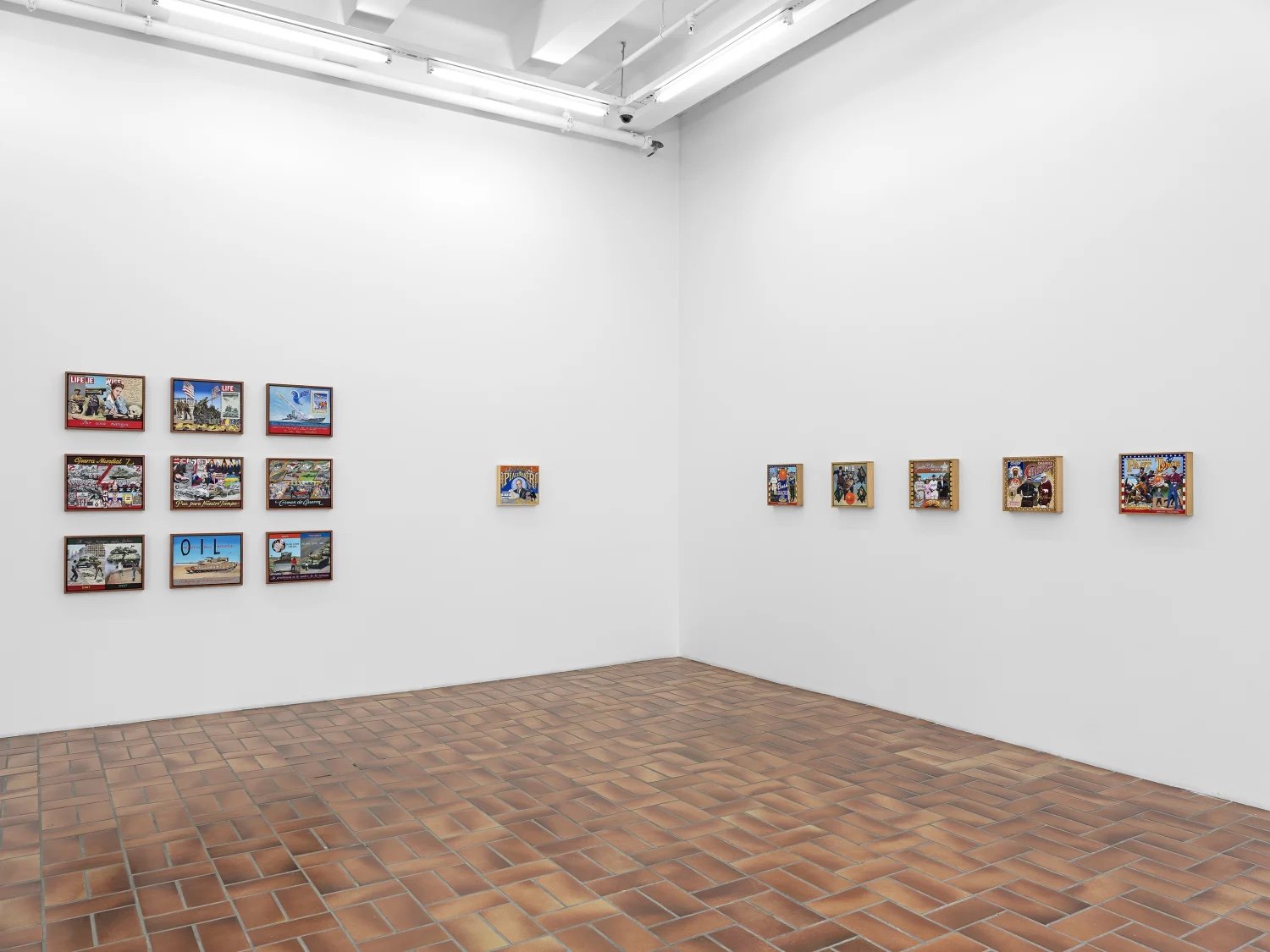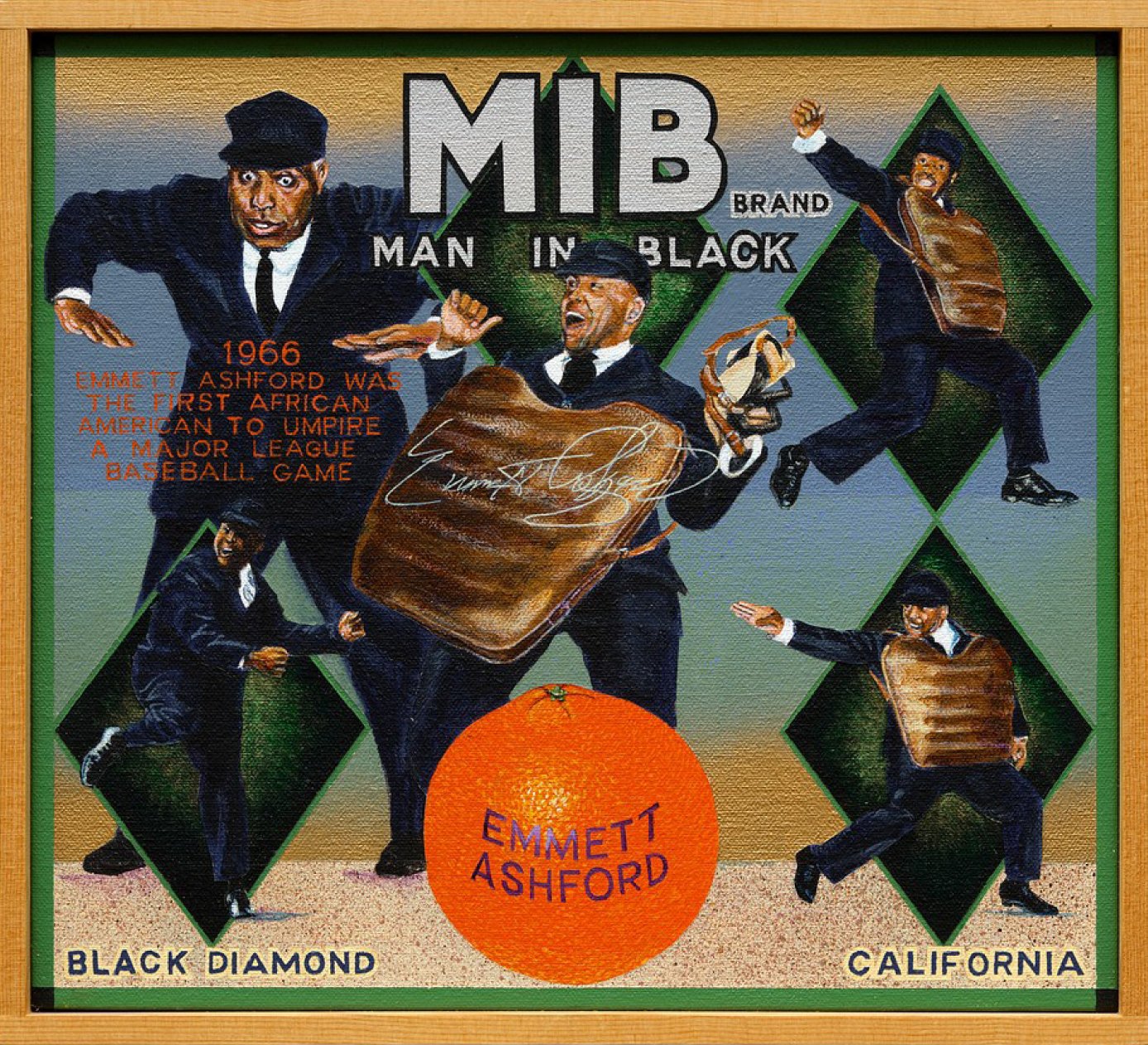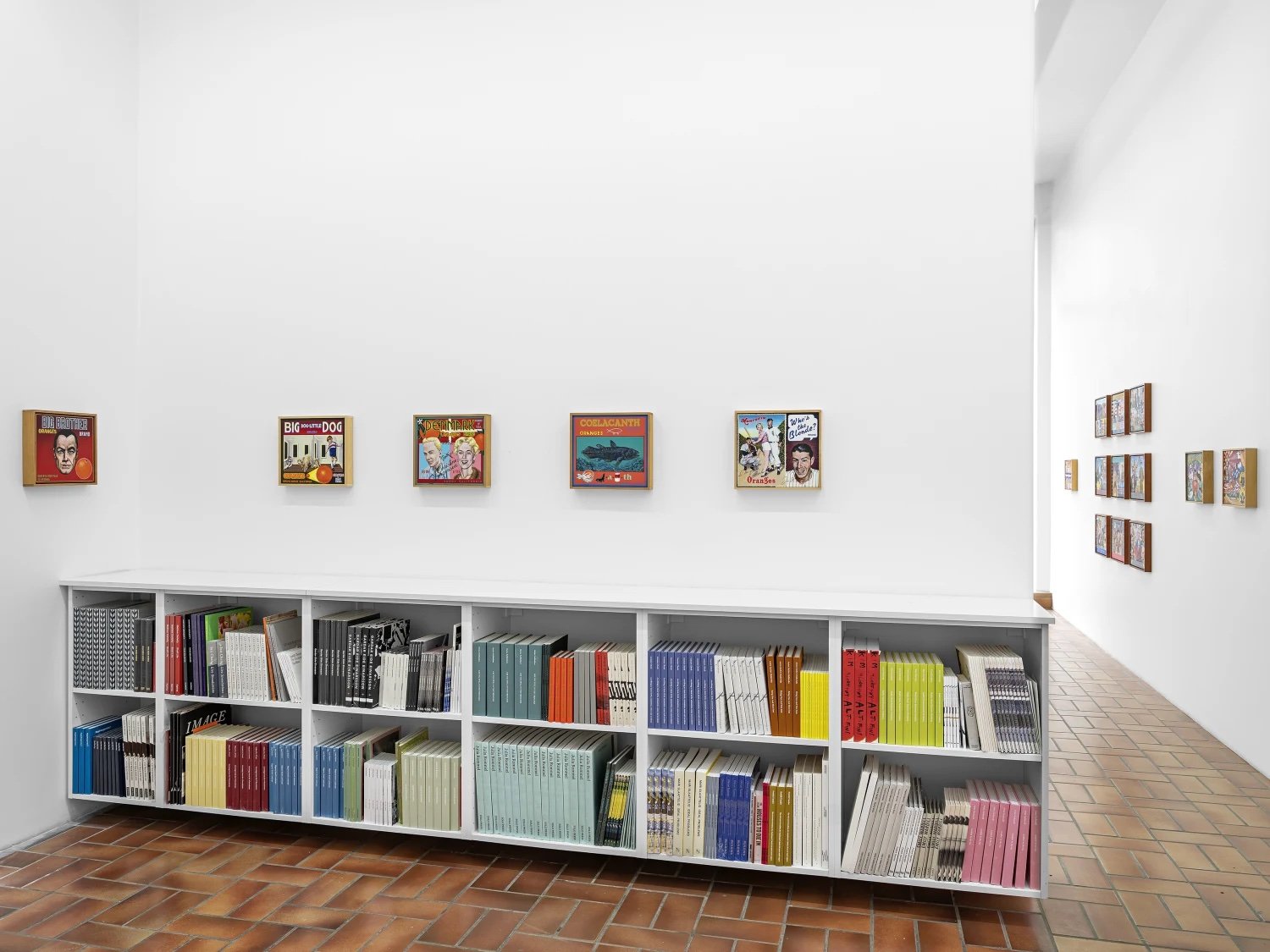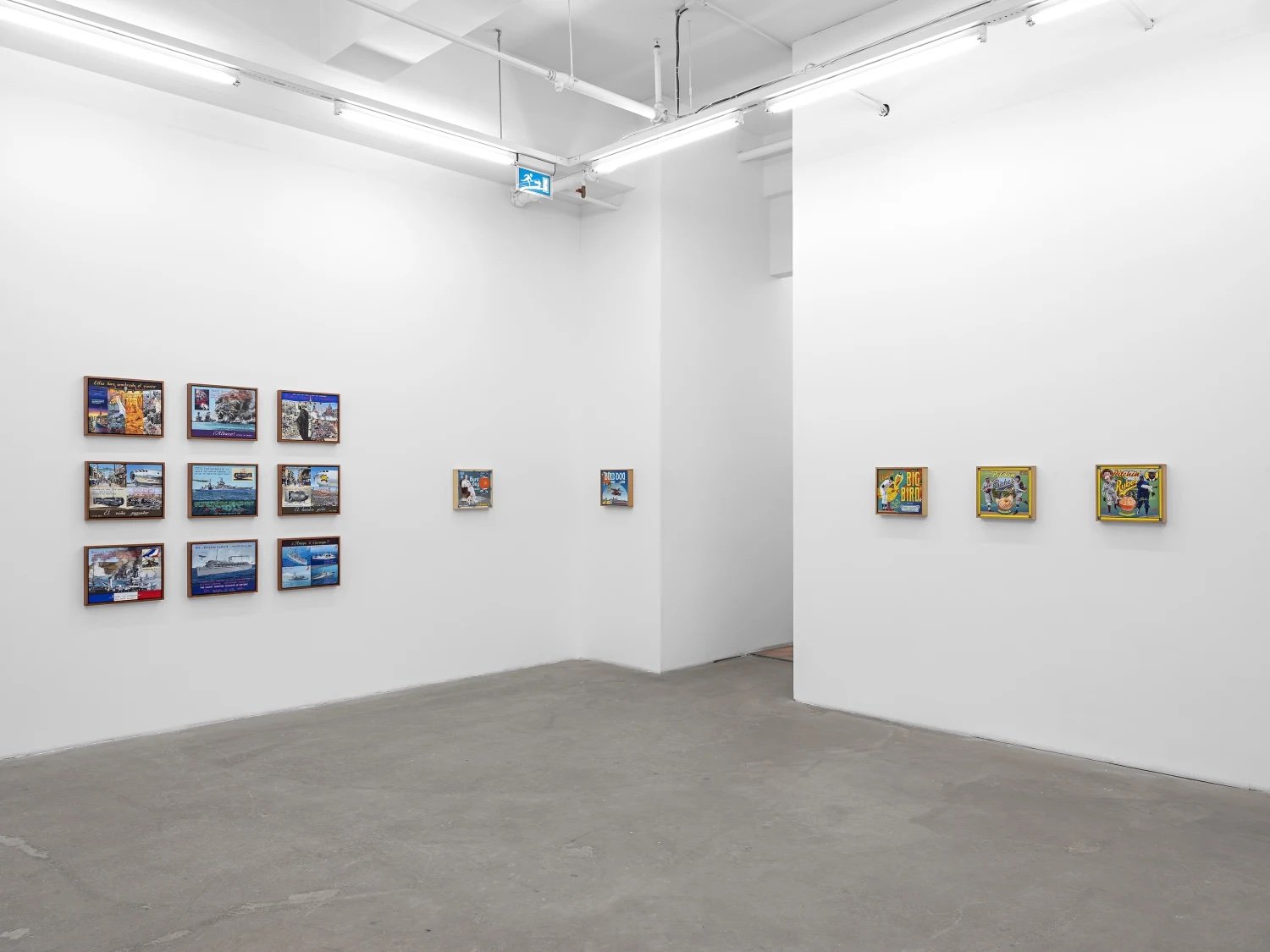Exhibition in Norway, at
Standard (oslo)
Ben Sakoguchi
DESASTRES DE LA GUERRA / WORDS & BASEBALL
april 24 - may 25, 2024
STANDARD (OSLO) - WALDEMAR THRANES GATE 86C - NO-0175, OSLO / +47 22 60 13 10 / +47 22 60 13 11 / INFO@STANDARDOSLO.NO / TUES - FRI 12:00-17:00 / SAT 12:00-16:00
— From Mary Grace Wright: STANDARD (OSLO) is proud to present our first solo exhibition with Ben Sakoguchi. For more than 60 years, Sakoguchi has been working in the realm of historical painting; combining stark depictions of global events with critical humor, and translating dark episodes in our collective history into poignant vignettes. "Desastres de la Guerra / words & baseball" places Sakoguchi's nuanced baseball and words paintings alongside the five suites which comprise the "Disasters of War" series—a modern age portrayal of Goya's namesake etchings, which decried the cruelties and inhumanity of war. Born in 1938 to ethnically-Japanese (American) parents in San Bernardino, California, Sakoguchi's childhood exposed him to the injustices of US internment camps and later to the captivating visuals of orange crate label marketing at the family grocery store. Sakoguchi's approach is inarguably informed by his own personal history, confronting us with the persistent nature of war and brutality as it mutates into its modern form.
To ingest digital media in the post-pandemic age is to be relentlessly inundated with every imaginable emotion on the wheel. "I'm feeling"— joy, love, fear, anger, sadness, surprise. After rounds of cognitive therapy, we graduate to "I'm feeling"— illustrious, rapturous, inadequate, exasperated, isolated, disillusioned. If we can pinpoint our affecting state, we are better equipped to deal with it. We subject ourselves to a barrage of advertisements, table settings we weren't invited to, and beauty regimes with 4 AM wakeup calls while we run the gamut of information. The hope of maintaining genuine connection to our real friends, larger society and world events increasingly dissipates as we're further distanced by the stimulus. The flow of information is constant, a rollercoaster with seemingly no end. In one swipe, we move from the shame of not affording the item of the week, to the shame of even giving a fuck about those shoes, while the horrors of ongoing war are staring back at us through the screen. It is painful to look but we are worse off to turn away, as many an algorithm has decided for us. We need to challenge ourselves to combat the privilege of fatigue, we cannot be satisfied with fleeting compassion.
Susan Sontag formulates the complications of representing suffering and iconography in her revered book, "Regarding the Pain of Others", 2003. In Chapter six, on acceptance, fear and what is deemed bearable to look at, one footnote stands out. "Tellingly, that connoisseur of death and high priest of the delights of apathy, Andy Warhol, was drawn to news reports of a variety of violent deaths (car and plane crashes, suicides, executions). But his silk-screened transcriptions excluded death in war. A news photo of an electric chair and a tabloid's screaming front page, "129 Die in Jet", yes. "Hanoi Bombed," no."
Ben Sakoguchi unflinchingly confronts head on. In the five suites of the "Disasters of War", we are, point-blank, faced with the atrocities of wars and genocide covering the globe, past and present. Phrases from Goya's own series are directly lifted and placed across Sakoguchi's painted panels. Goya's prints were published posthumously, possibly due to censorship and retaliation concerns. Sakoguchi works contemporaneously capture details of the moment. The series is not placing conflicts in hierarchies, suggesting one more worthy of your attention than another. Rather, it is about the absolute travesty that humans holds capacity for such abject horror, seemingly with no end or way to stop. It is repeated over and over again, so much that one is tasked to keep track of all the incidents portrayed. The realities of the subject material are ever present—in the preparation for this exhibition, Suite 4 received an addition, and a date change to the work, to include "2024". While Sakoguchi's interspersed use of satire could undercut the gravity of what we experience, instead, these moments of reprieve serve as a pathway in. We can momentarily smirk about Arnold Schwarzenegger until we are sternly reminded that propaganda machines and information campaigns fuel
Disasters of War - suite 3
The meticulously crafted compositions of Sakoguchi's "words" series may marginally be perceived as subtler (or less graphic) observations, but the Pop canvases, chaotically brandished with the exhausted catchphrases "Fake News" or "Russiagate" aptly capture a moment in the frenzied news cycles. Scandals and memes that we feel beaten over the head with today will lose their potency to future wars or cultural relevance of tomorrow.
Disasters of War - Suite 1
We are reminded of this transitory attention through Sakoguchi's baseball series, once upon a time America's favorite sport, now falling behind in the fútbol trends of today. The specificity of this increasingly niche subject especially in Europe serves as a lens to investigate social and political history. A reminder of trailblazing Emmet Ashford, the first African American umpire in Major League history. Or recontextualizing of George W. Bush as the leader of the Republican party. Sakoguchi's works serve not only as reminders or mirrors of human behaviors, they reveal every part of the social fabric that upholds and perpetuates the senseless horror, in ways we do not see or choose not to see. —from Mary Grace Wright at Standard (Oslo) —
Disasters of War - suite 5
Disasters of War - suite 4
Disasters of War - suite 2
Installation Photos: Vegard Kleven - Photos of individual works: Paul Salveson

